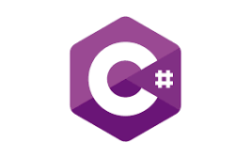C#
Course Objectives:
– Understand the fundamentals of the C# programming language
– Learn how to write, compile, and execute C# programs
– Develop skills in using C# to solve programming problems
– Gain knowledge in object-oriented programming concepts in C#
– Practice good coding practices and debugging techniques in C#
Course Outline:
1. Introduction to C# Programming
– Overview of the C# programming language and its features
– Setting up the development environment for C# programming
– Writing and running a simple C# program
2. Variables, Data Types, and Operators
– Understanding variables and data types in C#
– Working with arithmetic, assignment, and logical operators
– Using control structures such as if-else, switch, and loops
3. Arrays and Strings
– Declaring and initializing arrays in C#
– Accessing and manipulating array elements
– Working with strings and string manipulation functions
4. Functions and Methods
– Defining and calling functions in C#
– Understanding method parameters and return values
– Overloading methods and using optional parameters
5. Object-Oriented Programming (OOP) Concepts
– Introduction to object-oriented programming in C#
– Creating and using classes and objects
– Encapsulation, inheritance, and polymorphism in C#
6. Exception Handling
– Understanding exception handling in C#
– Using try-catch blocks to handle exceptions
– Throwing and catching exceptions in C# programs
7. File Input and Output
– Reading from and writing to files in C#
– Opening, closing, and manipulating file streams
– Handling file errors and exceptions
8. Collections and Generics
– Working with collections (lists, dictionaries, etc.) in C#
– Understanding generics and using generic collections
– Iterating over collections using loops and iterators
9. LINQ (Language Integrated Query)
– Introduction to LINQ and its features in C#
– Querying and manipulating data using LINQ syntax
– Working with LINQ to Objects, LINQ to XML, and LINQ to SQL
10. Windows Forms and GUI Programming
– Creating graphical user interfaces (GUI) using Windows Forms
– Designing and implementing event-driven applications
– Working with controls, forms, and dialog boxes
11. Database Connectivity with ADO.NET
– Introduction to ADO.NET for database connectivity
– Connecting to databases, executing queries, and retrieving data
– Working with datasets, data readers, and data adapters
12. Advanced Topics (optional)
– Multithreading and asynchronous programming in C#
– Working with XML and JSON data in C#
– Introduction to C# 8/9 features and enhancements

